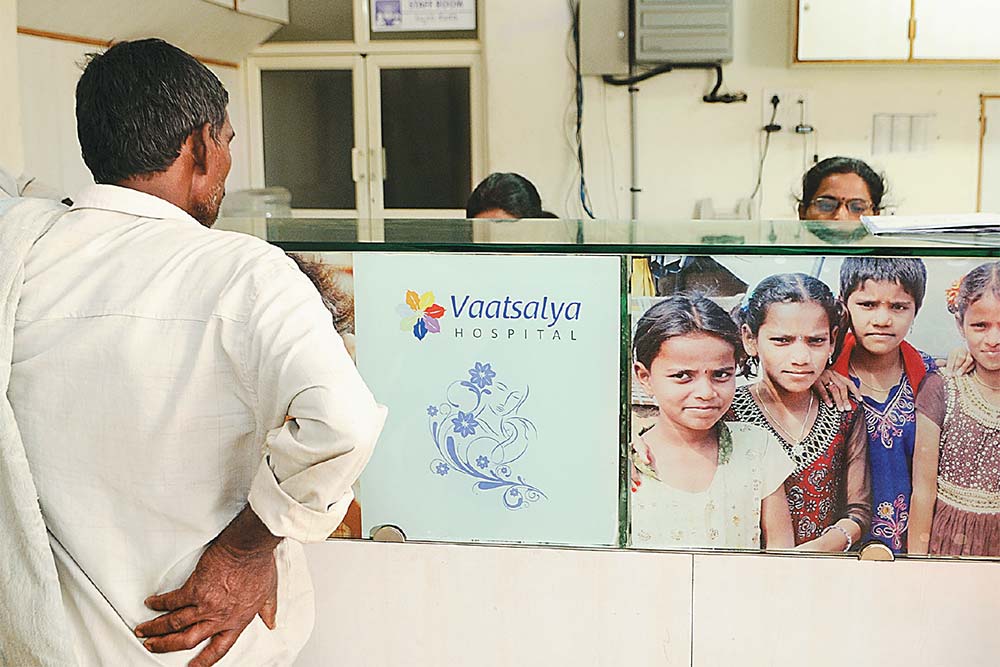Anyone who’s studied emerging markets talks about the opportunities the bottom of the pyramid offers, especially in India. Reams have been written on how 70% of the population lives in rural areas and 75.6% live on less than $2 a day. The lack of access to basic social needs, weak infrastructure, resource scarcity and poverty are all well-documented. Which means there’s not only a social challenge but also an economic opportunity and it takes out-of-the-box thinking to create innovative, scalable models for this market.
Some companies make the task look too easy. Narayana Hrudayalaya, Vaatsalya and Vision Spring are three healthcare providers whose business models are centred on healthcare inclusion of the rural poor, in cost-effective, innovative ways. The building blocks of the overall business strategy of any organisation include value offering, operational strategy to enable value creation, customer interface strategy to enable customer relationships and delivery network and financial strategy. How do these three stack up on these parameters?
Value offering: All three players aim to provide people at the bottom of the pyramid with affordable, accessible healthcare, with an accent on preventive healthcare. But even if the end is the same, the means differ quite significantly. Vision Spring — which provides affordable spectacles to the poorest — has created a wide network of last-mile connectivity via Vision Entrepreneurs (VEs), wholesalers and franchise partners; the VEs operate in rural India, doing eye screenings and selling spectacles. Vaatsalya Healthcare, in contrast, has adopted a hub-and-spoke model of hospitals, day cares and clinics and has undertaken a rapid expansion of new hospitals providing primary and secondary healthcare in tier 2 cities and suburban towns. For its part, Narayana Hrudayalaya achieved the same by adopting an integrated network of hospitals, mobile outreach vans and tele-medicine network.
Operational strategy: Two aspects stand out when it comes to the operational strategy of these three organisations. First, all were started and managed by founders who were driven by more than mere commercial interests. They were genuinely interested in bringing about a fundamental transition in the availability and accessibility of affordable and quality healthcare for the masses. Second, there is a continuous focus on cost control across the complete value-chain at all three organisations.
Vision Spring focuses on cost optimisation on the supply side by hiring locals as direct sales force (the VEs) and leveraging the existing distribution network of entrepreneurs, government cooperatives, community health workers and civil society organisations. Vaatsalya achieved the same with its no-frills, hub-and-spoke model, while Narayana Hrudayalaya adopted a lean organisational structure. Here, specialists focus only on surgeries and consultations rather than administrative tasks; girls from poor communities are trained as nurses; and high volumes of surgeries and catheterisation procedures are made possible thanks to extended working hours for doctors and extended availability of operation theatres.
Customer interface strategy: All three players have involved locals in their operations, building skills and engaging them for last-mile connectivity with the consumers. Vision Spring hired rural people in its sales force while the other two have extensively engaged locals as nurses and support staff. In addition, Narayana Hrudayalaya has launched micro-insurance schemes like Yeshaswini and Arogya Raksha, which help make healthcare affordable for the masses.
Delivery channel: There are striking similarities in the approach of the three players in choice of delivery network. Vision Spring being a product company has focused on building a multi-layered distribution and direct sales network, while Narayana Hrudayalaya, too, has adopted the mixed approach for value delivery, given its combination of brick-and-mortar hospitals, vans and healthcare through video-conferencing.
Financial strategy: All the three organisations have an ongoing focus on cost control and optimisation by integrating technology-based innovations in their operational processes; bargaining with suppliers on volumes and inventory; taking decisions on lease versus buy; hiring locals for operations and distributions; no-frills offerings that offer best of quality with optimal packaging etc. Over a period of time, with an ongoing focus on cost- and productivity-related innovations, all three healthcare providers have reduced their operational cost and salary overheads to below market averages. For revenue, Vision Spring and Narayana Hrudayalaya follow the cross-subsidised approach, where they target the high- and mid-income segments apart from the low-income segment, and charge them as per their paying capacity. This has helped both offer a high performance/ price ratio to the poorest segment.
The challenge for tomorrow is to build and create unique business models that provide unique solutions to the masses and bring about a positive impact on the economic development of our country. How many more such organisations India can create will decide how well it addresses the needs of those at the bottom of the pyramid.











